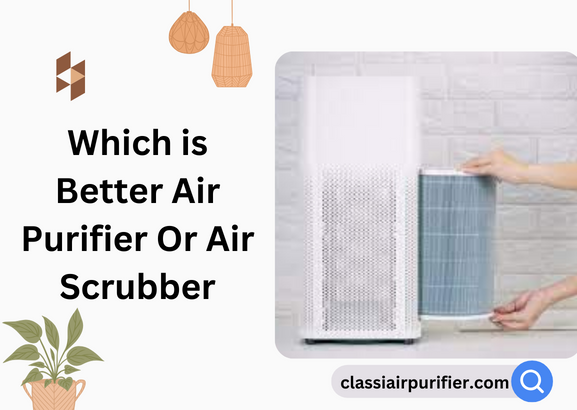Create a cleaner indoor environment by placing air purifiers strategically in your home. Ensure proper maintenance for optimal performance and healthier air quality.
Air purifiers are essential for removing airborne pollutants, allergens, and odors from your environment. With the right tips, you can maximize the benefits of your air purifier and enjoy a healthier living space. Whether you’re a first-time user or seeking to enhance your air purifier’s efficiency, this guide will provide you with valuable insights and tips.
By understanding how to effectively use and maintain your air purifier, you can create a healthier and more comfortable indoor environment for yourself and your family. With the following tips and recommendations, you can optimize your air purifier’s performance and improve the overall air quality in your home.
Choosing The Right Air Purifier
When it comes to improving the air quality in your home or office, investing in an air purifier can make a significant difference. With so many options available, choosing the right air purifier can be overwhelming. To help you make an informed decision, here are some important factors to consider.
Consider The Size Of The Room
Before purchasing an air purifier, take into account the size of the room where you plan to use it. Air purifiers are designed to clean the air in specific room sizes, so selecting the appropriate size is crucial for optimal performance.
Here’s a simple guide:
| Room Size | Ideal Air Purifier Size |
|---|---|
| Small rooms (up to 300 sq. ft.) | Compact air purifier or tabletop model |
| Medium rooms (300-700 sq. ft.) | Medium-sized air purifier |
| Large rooms (700+ sq. ft.) | Large air purifier or multiple units |
By selecting an air purifier that matches the size of your room, you ensure that it can effectively filter and circulate the air, providing you with cleaner and healthier indoor air quality.
Evaluate The Air Quality Needs
The air quality in different spaces can vary depending on factors such as pollution levels, allergens, and the presence of odors or chemicals. Before making a purchase, it’s essential to evaluate your air quality needs to determine which features and filtration technologies are necessary for your specific situation.
Consider the following:
- Do you live in an area with high levels of outdoor pollution?
- Do you or your family members have allergies or respiratory conditions?
- Are there specific odors or chemicals you want to eliminate?
By identifying your air quality needs, you can choose an air purifier with the appropriate filters, such as HEPA filters for allergens or activated carbon filters for odors and chemicals.
Additionally, you might want to consider air purifiers with smart features that provide real-time air quality monitoring and automatic adjustments based on detected pollutants.
Remember, the key to choosing the right air purifier is to understand your specific needs and find a unit that offers the features and filtration capabilities that align with those needs. By doing so, you can ensure cleaner, fresher air in your indoor environment.
Ideal Placement
When setting up an air purifier in your home, finding the ideal placement is key to ensuring optimal performance. Proper placement can maximize the purifier’s efficiency and alleviate concerns about air quality. Here are some essential tips to consider for ideal placement.
Avoid Obstructions
Position the air purifier in a location that is free from obstructions, such as furniture, curtains, or other objects that could impede the airflow. Maintaining clear space around the unit allows for unobstructed circulation of air, enabling the purifier to effectively capture and filter airborne particles.
Optimal Height And Position
Place the air purifier at an optimal height and position, typically at a level where it can efficiently draw in and purify the surrounding air. For a room setting, positioning the purifier at a slightly elevated level helps to facilitate airflow and distribution of clean, purified air throughout the space.
Maintenance
For effective air purifier performance, regular maintenance is crucial. Clean filters every 3-6 months and ensure proper airflow. Refresh your unit by dusting the exterior and keeping the surroundings clean. Regular maintenance prolongs the purifier’s lifespan and maintains optimal air quality.
Maintenance is vital to ensure the efficient operation of your air purifier and to safeguard the air quality in your home. By undertaking regular maintenance, you can prolong the lifespan of your air purifier and maintain its effectiveness in removing airborne pollutants. Here’s how to keep your air purifier in top condition with these maintenance tips. Regular Filter Replacement Replacing the filters in your air purifier is crucial for its performance. Be sure to check the manufacturer’s instructions for the recommended filter replacement schedule. Typically, pre-filters should be replaced every 3 months, while HEPA filters and carbon filters may last anywhere from 6 to 12 months, depending on air quality and usage. Set a reminder to ensure timely replacement. Cleaning the Unit Regularly cleaning the external surfaces of your air purifier will prevent the buildup of dust and dirt, which can impede its functionality. Wipe the outer casing and control panel with a damp cloth and mild detergent. For stubborn grime, use a soft brush to gently dislodge dust from crevices. Ensure the unit is completely dry before reconnecting to power. Clean the intake and outlet vents to remove any obstructions that might hinder the airflow. This can be done using a vacuum cleaner attachment or a small brush. Inspect and wipe clean the internal components to prevent the accumulation of dust particles and mold growth which could compromise air quality. By adopting these maintenance practices, you ensure that your air purifier operates at its peak efficiency, providing clean and healthy air for you and your family. Regular maintenance not only prolongs the life of your unit but also maximizes its effectiveness.Effective Use
Discover effective tips for using air purifiers to improve indoor air quality. From selecting the right model to proper maintenance, these tips will help you maximize the benefits of your air purifier for a healthier and cleaner environment.
Running The Purifier Correctly
When it comes to getting the most out of your air purifier, running it correctly is crucial. Follow these tips to ensure you are maximizing its performance:
- Choose the right location: Place your air purifier in a central location of the room, away from furniture or walls that may obstruct the air flow.
- Keep it running: For optimal air quality, it’s best to keep your purifier running continuously. This helps to maintain a consistent and clean environment.
- Adjust fan speed: Depending on the level of pollutants in the air, adjust the fan speed accordingly. Higher fan speeds are ideal for rapid purification, while lower speeds promote quieter operation.
- Change the filter regularly: Regularly check and change the filter as recommended by the manufacturer. This ensures that your purifier is working efficiently and effectively.
Maximizing Efficiency
To make the most of your air purifier’s efficiency, consider these helpful tips:
- Close windows and doors: When using an air purifier, it’s essential to seal off the room as much as possible. This prevents outdoor pollutants from entering and allows the purifier to focus on cleaning the indoor air.
- Reduce clutter: Cluttered spaces can collect dust and other particles, making it more challenging for the purifier to effectively clean the air. Keeping your space tidy helps maximize its efficiency.
- Minimize smoking: If you or someone in your household smokes, it’s advisable to do so outdoors. Smoking indoors introduces harmful chemicals and toxins into the air, which can strain the purifier’s filtration system.
- Clean the environment: Regularly dust, vacuum, and mop your living space to reduce the overall amount of pollutants in the air. This eases the workload of your air purifier, enhancing its efficiency.
Additional Tips
Here are some more helpful hints to get the most out of your air purifier:
Consider Noise Levels
- Avoid placing the air purifier in bedrooms for peaceful sleep.
- Look for models with low decibel ratings to reduce noise.
- Keep the purifier on a stable surface to minimize vibrations.
Energy Consumption
- Choose an energy-efficient air purifier model for cost savings.
- Check the energy consumption rating before purchasing.
- Use the purifier strategically to optimize energy usage.
Frequently Asked Questions For Air Purifier Tips
How Often Should I Change The Filter In My Air Purifier?
Regularly replace the filter every 3 to 6 months to maintain optimal performance and improve air quality in your home. Clean filters ensure efficiency in capturing pollutants like dust, allergens, and odors.
Do Air Purifiers Help With Allergies?
Yes, air purifiers can help alleviate allergy symptoms by filtering out common allergens such as pollen, pet dander, and dust mites from the air. This can lead to reduced sneezing, coughing, and overall improvement in breathing quality.
What Size Air Purifier Do I Need For My Room?
Select an air purifier with a CADR (Clean Air Delivery Rate) suitable for the size of your room. It’s recommended to choose a purifier with a CADR rating higher than the room’s square footage for optimal air purification.
Can Air Purifiers Remove Odors From My Home?
Yes, air purifiers equipped with activated carbon filters can effectively remove odors from cooking, pets, smoking, and more. The activated carbon captures and neutralizes odorous particles, leaving your indoor air fresh and clean.
Conclusion
Optimizing the air quality in your home with an air purifier is a wise investment. By following these tips, you can select the right size and type of purifier, understand its features and maintenance requirements, and maximize its effectiveness in removing pollutants from the air.
Remember to regularly clean and replace filters, and keep the purifier running consistently to achieve optimal results. Breathe cleaner air and enjoy the benefits of a healthier home environment.


